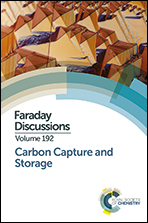Post-combustion carbon dioxide capture cost reduction to 2030 and beyond
Abstract
Post-combustion CO2 capture (PCC) can be achieved using a variety of technologies. Importantly it is applicable to a wide range of processes and may also be retrofitted in certain cases. This paper covers the use of PCC for low carbon power generation from new natural gas combined cycle (NGCC) plants that are expected to be built in the UK in the 2020s and 2030s and that will run into the 2050s. Costs appear potentially comparable with other low carbon and controllable generation sources such as nuclear or renewables plus storage, especially with the lower gas prices that can be expected in a carbon-constrained world. Non-fuel cost reduction is still, however, desirable and, since CO2 capture is a new application, significant potential is likely to exist. For the NGCC+PCC examples shown in this paper, moving from ‘first of a kind’ (FOAK) to ‘nth of a kind’ (NOAK) gives significant improvements through both reduced financing costs and capital cost reductions. To achieve this the main emphasis needs to be on ‘commercial readiness’, rather than on system-level ‘technical readiness’, and on improvements through innovation activities, supported by underpinning research, that develop novel sub-processes; this will also maintain NOAK status for cost-effective financing. Feasible reductions in the energy penalty for PCC capture have much less impact, reflecting the inherently high levels of efficiency for modern NGCC+PCC plants.
- This article is part of the themed collection: Carbon Capture and Storage

 Please wait while we load your content...
Please wait while we load your content...